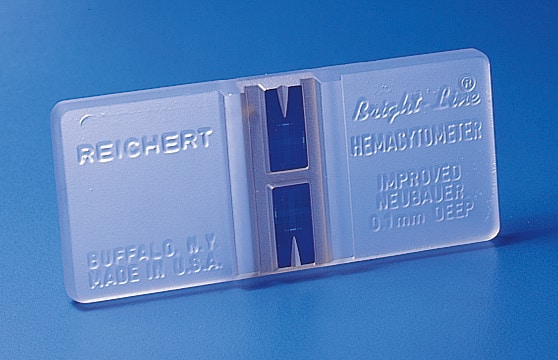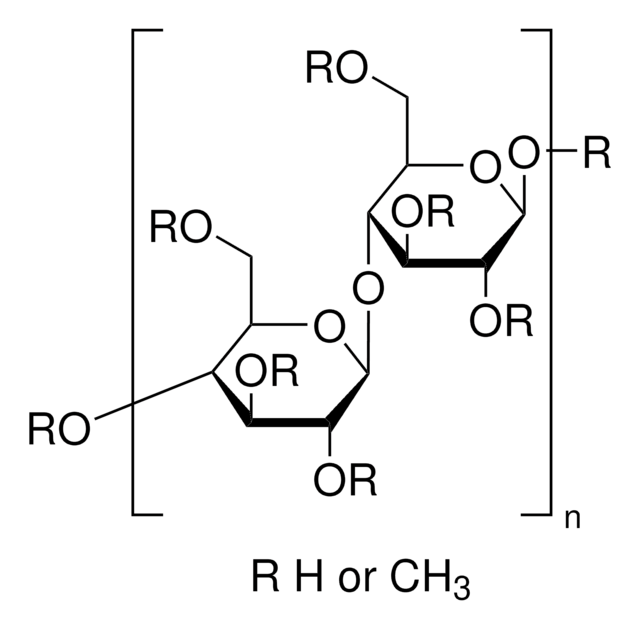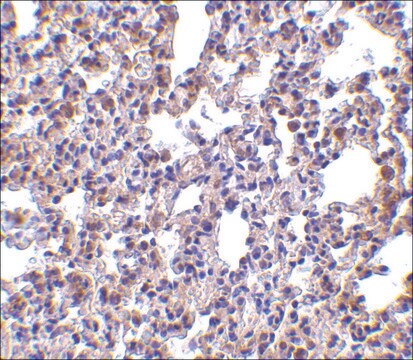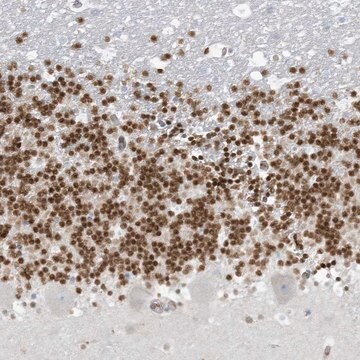P0608
Anti-Potassium Channel SK3 (KCa3, Kcnn3, SKCa3) antibody produced in rabbit
affinity isolated antibody, lyophilized powder
Synonym(s):
Anti-KCa2.3, Anti-SK3, Anti-SKCA3, Anti-ZLS3, Anti-hSK3
Sign Into View Organizational & Contract Pricing
All Photos(2)
About This Item
Recommended Products
biological source
rabbit
Quality Level
conjugate
unconjugated
antibody form
affinity isolated antibody
antibody product type
primary antibodies
clone
polyclonal
form
lyophilized powder
species reactivity
rat, human
technique(s)
western blot (chemiluminescent): 1:200 using rat brain membranes
UniProt accession no.
storage temp.
−20°C
target post-translational modification
unmodified
Gene Information
human ... KCNN3(3782)
rat ... Kcnn3(54263)
General description
The calcium-activated potassium ion channel (KCNN3) is a voltage-independent small-conductance calcium-activated potassium channel. It is abundantly expressed in the brain and central nervous system. Its predominant expression is seen in the hypothalamus. KCNN3 gene is located on human chromosome 1q21.3.
Immunogen
synthetic peptide corresponding to amino acids 2-21 of human potassium channel SK3. The epitope is highly homologous in rat.
Application
Anti-Potassium Channel SK3 (KCa3, KCNN3, SKCa3) antibody produced in rabbit has been used in western blot analysis (1:250) and immunohistochemical staining (1:50).
Biochem/physiol Actions
Anti-Potassium channel SK3 recognizes the SK3 protein in humans and rats by immunoblotting. Potassium channels contribute to maintaining cell volume, membrane potential, neuronal excitability, and the secretion of transmitters, salt, and hormones. It is extremely sensitive to changes in intracellular calcium levels, which are common during action potentials. KCNN3 helps to determine neuronal firing rates via the after-hyperpolarization. It is a migraine candidate susceptibility gene. Aberrations in the KCNN3 gene may trigger cortical spreading depression (CSD) and trigeminal sensitivity.
Physical form
Lyophilized at ~0.6 mg/ml from phosphate buffered saline, pH 7.4, containing 1% bovine serum albumin, and 0.05% sodium azide.
Disclaimer
Unless otherwise stated in our catalog or other company documentation accompanying the product(s), our products are intended for research use only and are not to be used for any other purpose, which includes but is not limited to, unauthorized commercial uses, in vitro diagnostic uses, ex vivo or in vivo therapeutic uses or any type of consumption or application to humans or animals.
Not finding the right product?
Try our Product Selector Tool.
Storage Class Code
11 - Combustible Solids
WGK
WGK 2
Choose from one of the most recent versions:
Already Own This Product?
Find documentation for the products that you have recently purchased in the Document Library.
Association study of CAG repeats in the KCNN3 gene in Israeli patients with major psychosis.
Ritsner M
Psychiatric Genetics (2003)
Two conserved arginine residues from the SK3 potassium channel outer vestibule control selectivity of recognition by scorpion toxins.
Feng J
The Journal of Biological Chemistry (2013)
Association between SNP rs13376333 and rs1131820 in the KCNN3 gene and atrial fibrillation in the Chinese Han population.
Luo Z
Clinical Chemistry and Laboratory Medicine (2014)
SK3/TRPC1/Orai1 complex regulates SOCE-dependent colon cancer cell migration: a novel opportunity to modulate anti-EGFR mAb action by the alkyl-lipid Ohmline
Maxime G
Oncotarget (2016)
Pivotal role of the lipid Raft SK3-Orai1 complex in human cancer cell migration and bone metastases.
Aurélie Chantôme et al.
Cancer research, 73(15), 4852-4861 (2013-06-19)
The SK3 channel, a potassium channel, was recently shown to control cancer cell migration, a critical step in metastasis outgrowth. Here, we report that expression of the SK3 channel was markedly associated with bone metastasis. The SK3 channel was shown
Our team of scientists has experience in all areas of research including Life Science, Material Science, Chemical Synthesis, Chromatography, Analytical and many others.
Contact Technical Service








